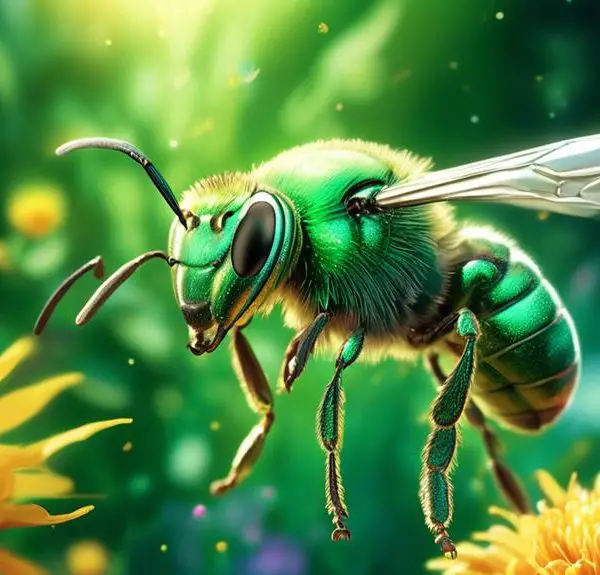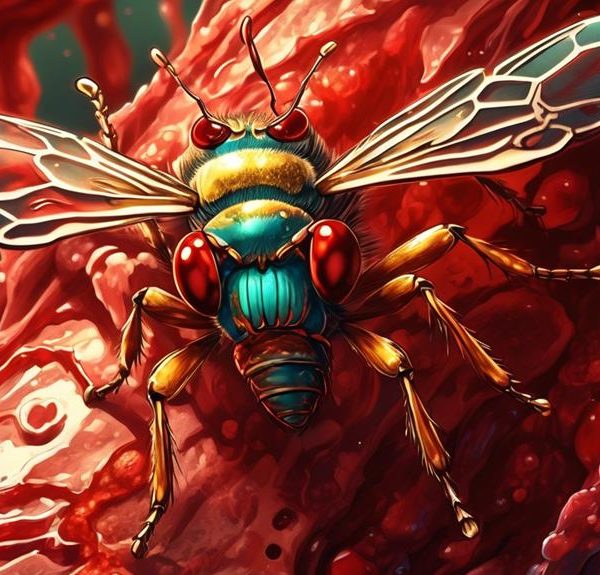Get immersed in the intriguing world of sweat bees and discover their complex relationship with water.
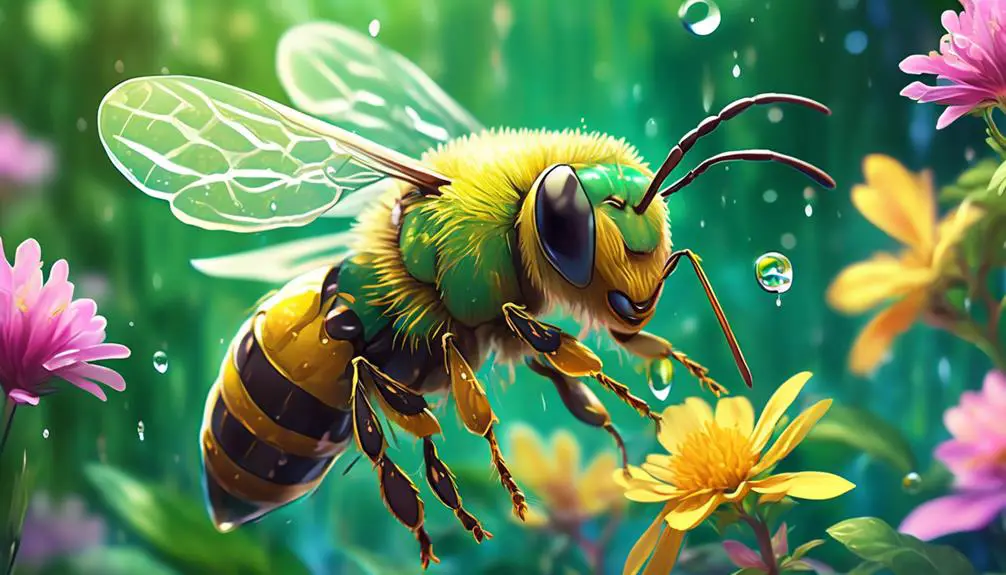
Do Sweat Bees Like Water
When it comes to the not-so-glamorous world of sweat bees, you might find yourself asking if these tiny creatures have an affinity for water. You're not alone in your curiosity. These diminutive insects, known for their attraction to human perspiration, have intrigued researchers and nature enthusiasts for years.
But does their love for sweat indicate a broader preference for water, or is it merely a thirst for salts and proteins found in our perspiration? As we explore this topic further, you'll find that the relationship between sweat bees and water is more complex than you might have anticipated.
Stay with us, as we're about to unravel the mystery.
Key Takeaways
- Sweat bees are drawn to human perspiration for salts and electrolytes, not water.
- Water is essential for sweat bee survival, sourced from nectar, dew, and moist soil.
- Sweat bees interact with water in various ways, including drinking from sweaty skin and using it for nest construction and cooling.
- Debunking myths about sweat bees is important, as they are relatively harmless and beneficial pollinators.
Understanding Sweat Bee Characteristics
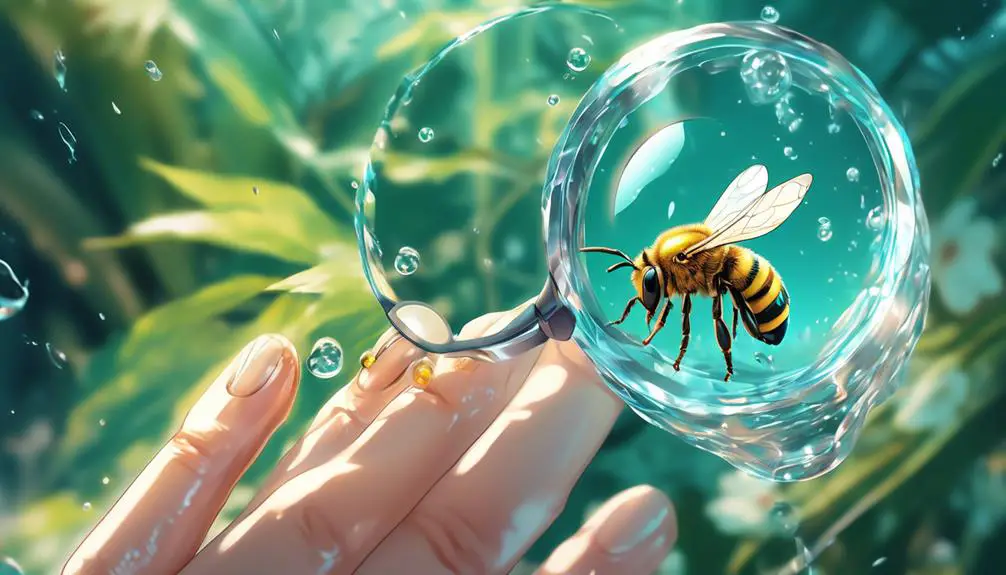
To truly appreciate sweat bees, you'll need to understand their distinct characteristics, from their attraction to sweat to their unique color variations. These tiny creatures are drawn to your perspiration, not for its water content, but for the salts and electrolytes. They're not out to harm you, they're just on a quest for minerals.
Color-wise, sweat bees break the bee stereotype. They're not all black and yellow. Some display a metal-like sheen in shades of green, blue, or even purple. Their appearance can be quite stunning if you're lucky enough to get a close look.
You'll also want to appreciate their role as pollinators. Just like their larger counterparts, sweat bees play a crucial part in maintaining our ecosystem's balance. They're particularly fond of wildflowers, so if you're looking to attract these little guys and lend a hand to Mother Nature, adding some native plants to your garden would be a fantastic start.
Don't jump to conclusions about these fascinating insects. They're not out to sting you, rather, they're more interested in helping your garden thrive. Understanding their characteristics will surely help you appreciate the uniqueness and importance of sweat bees.
Sweat Bees' Natural Habitat
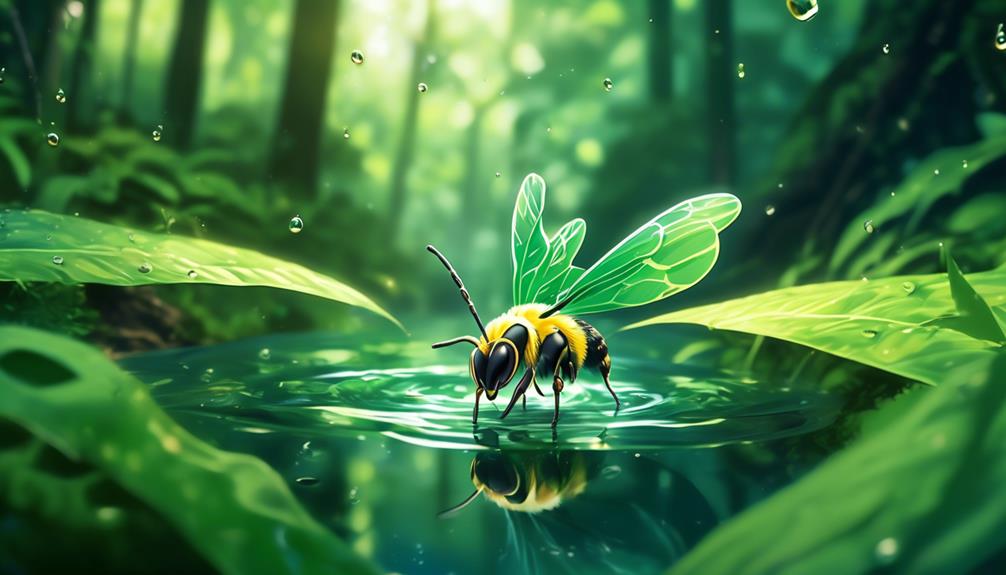
You might be surprised to learn that sweat bees favor a wide range of habitats, from forests and meadows to your very own backyard. They're adaptable creatures with a keen sense of survival. They're not picky about where they set up shop, as long as it meets their basic survival needs.
Here are four key components of a sweat bee's natural habitat:
- Nesting Sites: Sweat bees mostly nest in the ground. They prefer bare or sparsely vegetated soil where they can easily burrow and raise their offspring.
- Food Sources: They need flowering plants for nectar and pollen, their main food source. That's why you often see them in gardens and meadows.
- Water Sources: Sweat bees aren't big fans of water, but they do need a bit to survive. They often get the moisture they need from nectar and dew.
- Sunlight: They're most active in direct sunlight. You'll rarely find them in deeply shaded areas.
Water's Role in Sweat Bee Survival

While sweat bees aren't exactly water enthusiasts, they still need a touch of moisture to survive, often sourcing it from nectar and morning dew. You see, water plays a crucial role in their survival, even if they're not dipping their tiny bodies in it.
Think of it this way, their primary source of nourishment, nectar, is essentially sugar water derived from plants. They extract it using their long, specialized tongues. Without this liquid sustenance, they'd be unable to maintain their energy levels or even reproduce.
Morning dew also presents a precious source of hydration. You'd often find sweat bees patrolling early in the morning, collecting tiny droplets off plants and flowers. This moisture not only quenches their thirst but also aids in digestion and nutrient absorption.
Water's role extends to their nesting habits too. They can't nest in overly dry soil. It's too hard for them to burrow into and doesn't hold the tunnel shape well. They need slightly damp soil, just enough to make the task easier and the nest more stable.
In essence, while you may not see sweat bees frolicking in puddles, don't be fooled. Water is a silent, yet integral part of their survival strategy.
Sweat Bees' Interaction With Water
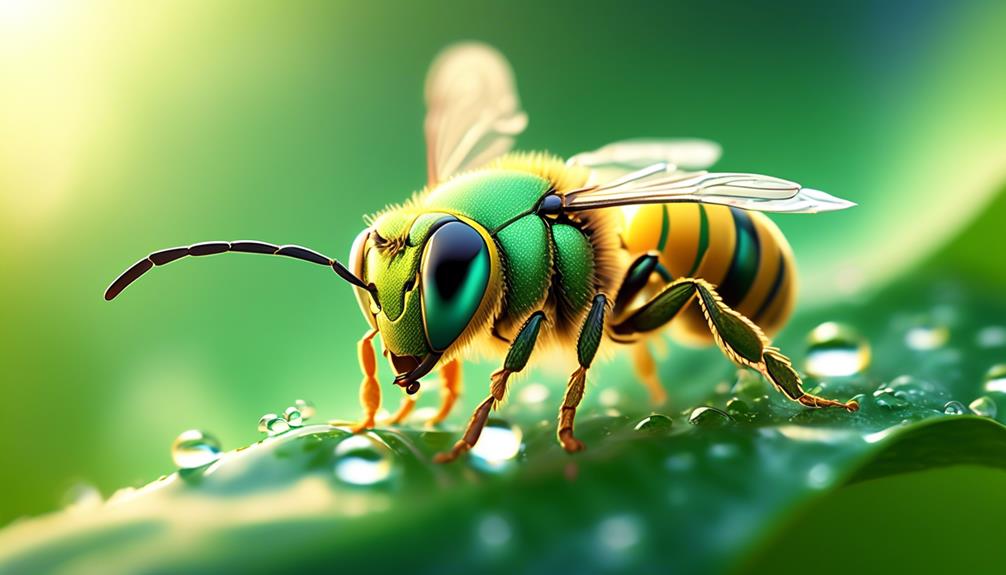
Let's dive into the fascinating ways sweat bees interact with water in their environment. Despite their small size, these bees have an intricate relationship with water, which you'll find fascinating.
- Drinking: Sweat bees, like many insects, need to drink water for survival. They'll often land on your sweaty skin to sip the salty water, hence their name.
- Nesting: Sweat bees often choose damp soil to construct their nests. The moisture helps to maintain the structural integrity of their homes.
- Cooling: During the hot summer months, sweat bees use water to cool their nests. They'll bring water droplets back and distribute them throughout the nest, reducing the overall temperature.
- Feeding: Interestingly, sweat bees also use water in the feeding process. They mix water with pollen to create a 'bee bread' for their larvae.
Understanding these interactions can help you empathize with these tiny creatures. They're not buzzing around you to be annoying. They're simply surviving, and water plays a key role in their survival. So next time a sweat bee lands on you, remember, they're just thirsty.
Debunking Sweat Bee Myths
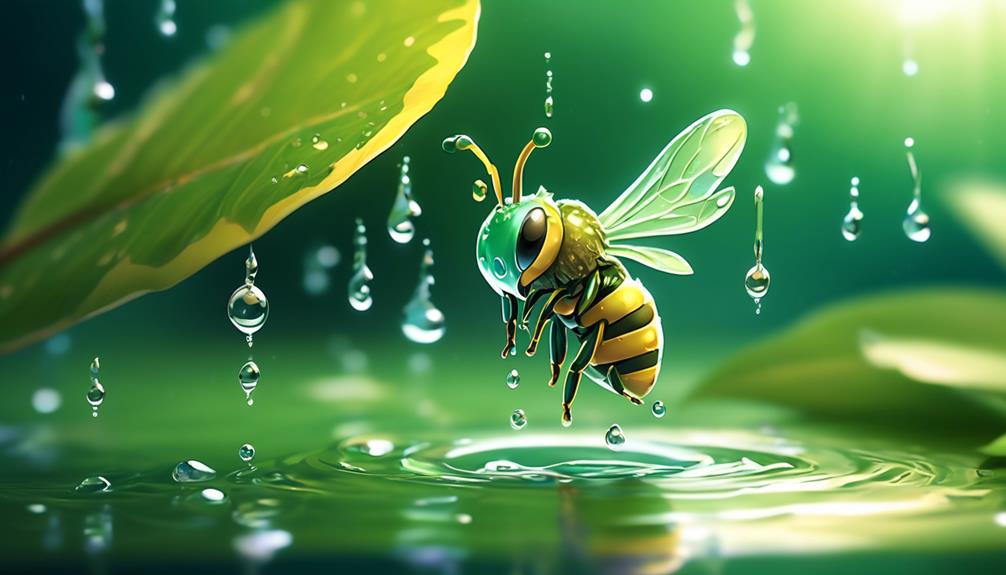
Despite common misconceptions, sweat bees aren't out to harm you; in fact, they're relatively harmless and essential to our ecosystem. They're often mistaken for wasps due to their bright metallic colors, but they're actually a type of bee. Don't let their name frighten you either. They're called 'sweat bees' because they're attracted to the salts in human sweat, not because they induce sweat or cause you to sweat.
Contrary to popular belief, sweat bees don't sting unless provoked. Their sting is also mild, less painful than a mosquito bite. They're not aggressive and typically ignore humans unless you threaten their nest or trap them against your skin.
Another myth is that sweat bees are pests. They're actually beneficial, pollinating plants that other bees ignore. Their presence can boost your garden's productivity and biodiversity.
In addition, sweat bees don't swarm. Unlike honeybees or bumblebees, they're solitary creatures who build individual nests.
You see, sweat bees aren't the menacing creatures they're often painted to be. Understanding them can help dispel fear and promote coexistence. After all, they're just doing their part in maintaining the balance of our ecosystem.
Conclusion
So, do sweat bees like water? Yes, they do. They need it for survival, just like us. It's part of their natural habitat and aids in their survival. They interact with water daily, but it's not like they're out for a swim.
Clearing up misconceptions is essential, and now you know – sweat bees aren't water fanatics, but they do appreciate a good drink. And remember, they're more interested in your sweat than your swimming pool!

